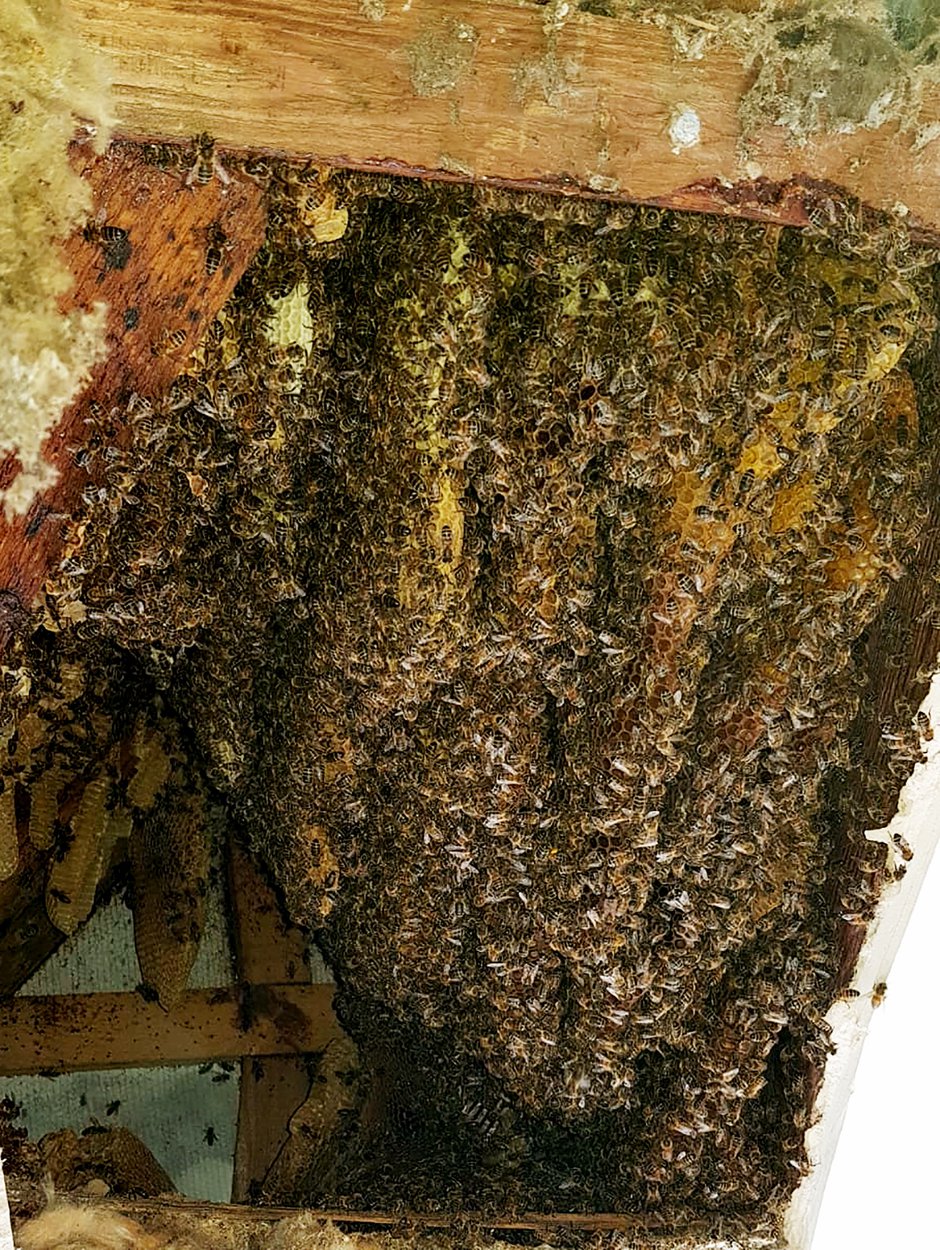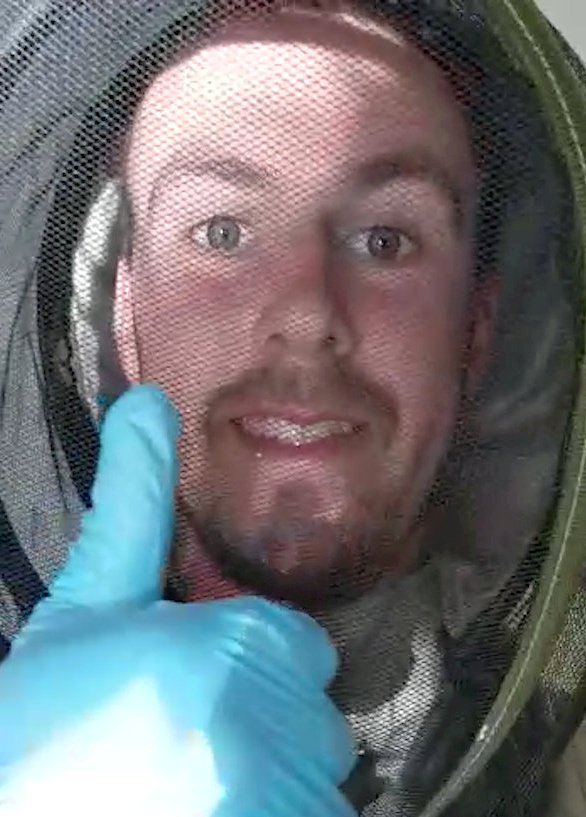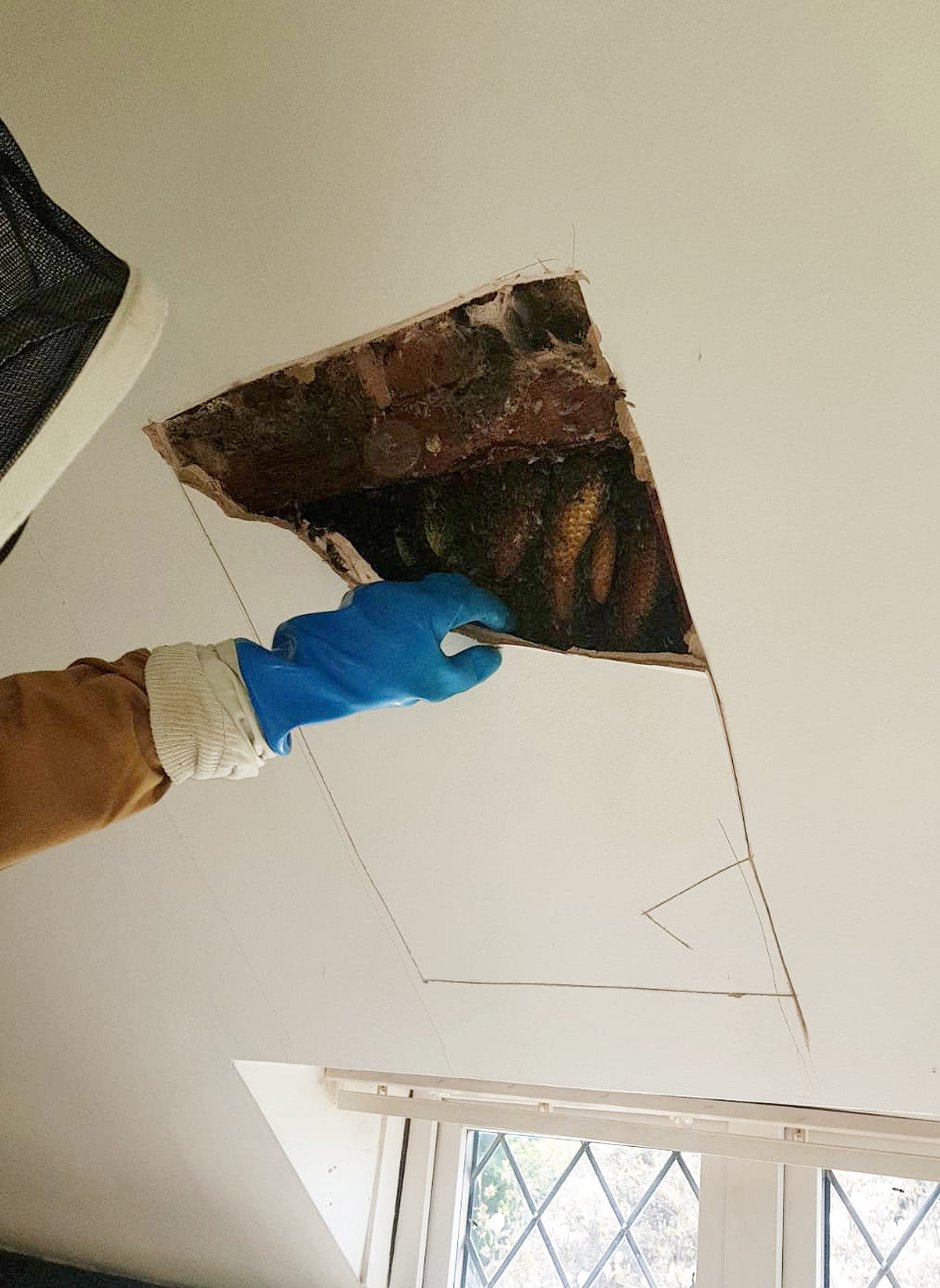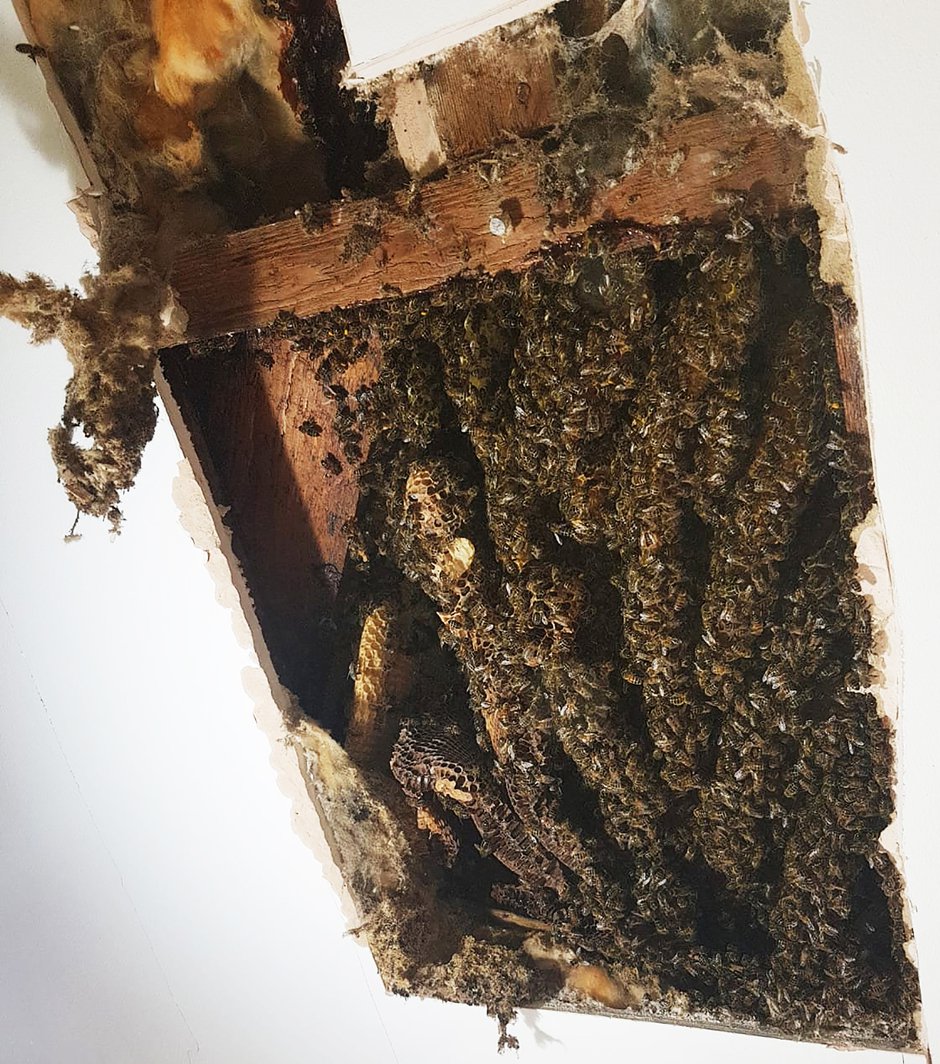Video by: David Bird  Image by: David Bird
Image by: David Bird
Amazing footage shows a pest controller using a HOOVER to remove a huge colony of 22,000 bees which plagued a family’s home for ten years.
The swarming insects had built a hive behind the plaster above the dormer window of a loft conversion.
The family spent years trying to remove the bees from their three-storey home in the Eastern Green area of Coventry but to no avail.
Bee experts told them the hive was too delicate to remove safely and numerous pest controllers simply refused the job because it was too dangerous.
In desperation, the family boarded up the room and left the attic to the bees until one pest controller came up with an innovative way of removing them safely – using a vacuum cleaner.
 Image by: David Bird
Image by: David Bird
David Bird, who owns Delta Pest Control in Coventry, spent several hours hoovering up the bees before transferring them to a sealed container.
They were then transported to an apiary where they will be used to produce honey.
Mr Bird said: “The homeowners have had an outstanding problem with a number of years.
“They were told by a number of pest controllers that it was impossible to remove.
“We opened it up to remove these bees.
“It’s an exceptionally large colony for this time of year. We think there are around 22,000.
“We found somewhere nice, warm and safe for them.
“Bees make their way into little voids in people’s homes due to the mild weather.
“A Queen bee would have swarmed there with a few other bees.
“The swarm would have originally been the size of a basketball.
“They stay pretty well enclosed in one place.
“This was a dormer window on a third floor bedroom, a spare room.
“The homeowners weren’t in any danger.
 Image by: David Bird
Image by: David Bird Image by: David Bird
Image by: David Bird
“We had to take away the plaster to gain access to them.
“The temperament of these bees is quite calm and relaxed.
“Bees keep themselves to themselves – they don’t go on attack mode easily.
“We used a normal vacuum and then transfer them to a bee transport box.
“They are jam packed in there – it’s about 40cm by 20cm by 2cm.
“We will take them to an apiary in the north of England. We are still still talking to the bee keeper so can’t say which one yet.
“Once the beekeeper has found they are comfortable, he will put them to work in a good hive.
“The beekeeper will get honey out of it.
“They haven’t got a very good chance of surviving if they are in the wild.
“You can’t just put them in the woods and hope for the best.”


